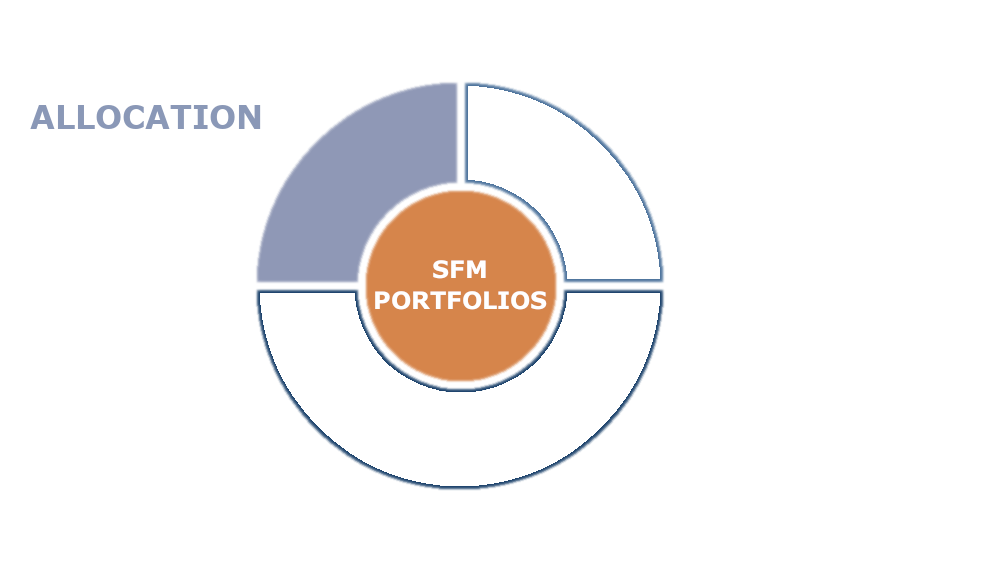An Updated Approach to Model Portfolio Building

If you’ve seen our past newsletters, you’ve likely noticed our Original “Model 25” Stock Portfolio that featured a list of 25 stocks that we evaluated every quarter. We’ve decided to discontinue tracking individual stocks, as ETFs over the past few years have surpassed stocks as our investment vehicle of choice for clients. Beginning with this newsletter, we offer you a glimpse into our SFM Model Portfolios. This is not a list of stocks, but instead a screened and factored list of our favorite funds—made up mostly of ETFs. A healthy majority of these funds trade commission-free at TD Ameritrade, thereby lowering costs for our clients.
We’ve provided three segments – Stock, Bond and Alternative Model Portfolios. These are what we refer to as the three buckets to which we expose nearly all of our clients. By having your nest egg diversified into three buckets, the volatility in a portfolio is reduced. “Don’t put all your eggs in one basket?” We more appropriately say “don’t put your nest egg in only one bucket.” To a child raised on a farm like me, this makes perfect sense. I know of the need to be constantly aware of things that might upset the eggs.
Under each of the three segments we highlight Growth-oriented portfolios and Income-oriented portfolios. If you aren’t using investment income for routine expenses, you are considered to still be GROWing your nest egg. Often in retirement, you reach the point where you are using the INCOME from your portfolio.
As far as which funds make our list, that is where we add value by determining which factors are most important in choosing an investment. After going through a screening process, much like evaluating laying hens, we show you our top funds in each bucket, for each objective. We provide you information about the current yield, one-year return, three-year return and standard deviation. Current yield is important to those who need income but don’t want to dip into principal. One and three year returns are provided to demonstrate the funds’ total returns [income + appreciation/loss] over the recent past. Lastly, standard deviation is a measure of how volatile (a wild ride?) the funds’ returns have been over a three-year period. We favor funds with low standard deviations and high rates of total return.
If you are a client, you should recognize some of these funds from your TD Ameritrade statements. Next quarter, you will likely see some changes in our model portfolio holdings, as economic and market factors change. We consider our screened and factored favorite funds to be core holdings that are often appropriate for many different investor and client profiles.

